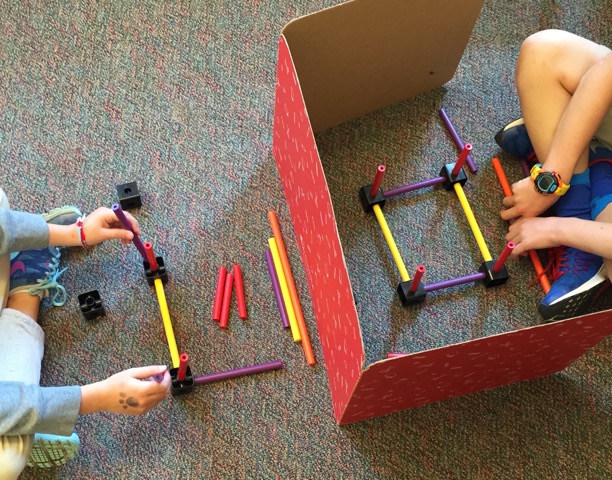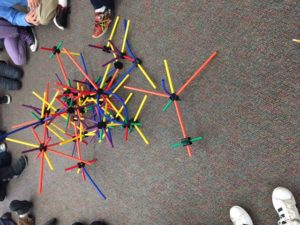BCILD is embarking on collaborative projects to investigate both best practices and innovative ideas in the teaching of mathematics (K-12).
Firstly, we have developed a relationship with Italian high school mathematics teacher, and Global Teacher Prize finalist, Lorella Carimali. Lorella’s biography is listed below, as well as a translation of a recent presentation Lorella gave in Italy.
Secondly, we are collaborating on a math podcast project with the Dawson School in Lafayette, CO. Dawson middle school students are interviewing and producing podcasts with adults in the community on the topic of how they currently use math in their daily lives. This activity helps students understand and appreciate the importance of mathematics in the ‘real world’, and gives them skills in interviewing and producing podcasts. We will provide further details on this project as it unfolds.
BCILD is interested in investigating best practices in the teaching of mathematics and sharing these ideas with teachers internationally. We present Lorella Carimali here as an introduction to an ongoing learning dialogue with her about her teaching philosophy and teaching practice.
Lorella Carimali HERE
Lorella Carimali – Mathematics Presentation – 2017
To develop an all-inclusive classroom setting which encourages the understanding of mathematics in a holistic way, we need to take account of both the process of being involved with a mathematical problem from start to finish and develop a comprehensive understanding of the discipline. Becoming a competent mathematician involves not merely the memorization of facts, but entails a deeper development and enjoyment of confidently utilizing intuitive skills and creativity in the process of problem solving. ‘Creative enthusiasm’ must become part of the learning process in mathematics, and it can be used across other learning disciplines as well.
A community of learners engages high-achieving students in the process of teaching their colleagues. In this way, the high-achievers refine their own thought processes through improved articulation while the students who find the topic more challenging feel included in the learning process.
Student mistakes in approach or calculation are not seen as negatives in the inclusive classroom but are instead seen as opportunities to learn. Mistakes open doors rather than close them. Use mistakes to motivate students. No student should ever feel inferior because they make mistakes. Students should see the usefulness of mistakes in their process of academic growth.
The methodology used in the teaching of mathematics should be neither mechanical nor automatic. Teachers need to use creative materials and approach students in a way that reinforces the idea that student intelligence and ability is not fixed, but rather something malleable and changeable with practice, concentration, and support. Teachers need to put tools in the hands of students, and support those tools by providing the student with an awareness of their own cognitive processes and abilities. Success in this endeavor is achieved when everyone in the classroom is equally involved, leaving nobody behind.
Points to consider:
(1) Teach the process before you present the problem. Use imagination and creativity in your practice. Each individual has an area of personal growth. Potential does not always lead to actual output.
(2) The teacher should act as a change agent for the student, uncovering collaboratively the student’s personal cognitive processes. Autonomous thinking depends on understanding your own capacity and process.
(3) The teacher and student should always have the same mindset and be available for growth opportunities.
(4) Teachers need to work with students in understanding the entire process of mathematics from problem understanding, to working through the process of solving the problem, to being able to articulate their thinking and problem solving processes to others. High-achievers need to have the ability to explain how they process their understanding.
Integral to the learning success of every student is having their progress carefully and consistently monitored each and every day, thereby fostering continuous engagement between the student and the teacher.
In teacher planning and preparation, plan your approach around who you have in the classroom as learners. Leverage the skills and abilities of each student to both their own, and the group’s, benefit.
An interesting approach with students would be to create a theatrical play around mathematics learning because it is important to develop skills such as intuition, imagination, projecting, theorizing, deducing, controlling and evaluation to be able, in a second moment, to ordinate, quantify and measure sustainability of facts and phenomenon belonging to reality.
I experimented with this model in different contexts, applying it following the scientific method and I could verify that it works and that it is replicable.
Students could express their discomfort with mathematics in a theatrical fashion, and they could safely explore ways to explain concepts and understandings to their peers. Play creation is similar to mathematics in that concentration, considering each detail, curiosity, routine, and repetition are all involved. In plays, as in mathematics, you recognize your own limitations, and can view them as opportunities for growth.
Studying math means essentially to learn to think mathematically and to become conscious of one’s own reasoning method, mastering procedures and not simply applying them, and therefore being able to transfer to other contexts the mathematical skills assimilated. Another approach would be to create a game in which students create a company where they have to use mathematics in building a business and making appropriate decisions regarding marketing, management, and the financing of a business.
A student wrote: “she made me re-evaluate math by teaching me to see it not as a set of formulas but as a way to see life and be able to simplify it by reasoning”.
Confidence is competence. Confidence is built through each student knowing their own mental processing capacity. What did you do? How did you do it? Why did you do it? The sharing of these insights between students is vital to a student’s overall competency. The students develop into a team working together where mistakes are not ostracized, but instead act as learning opportunities. Sharing is a process that involves everyone, with all participants feeling included and having the ability to refine and define their own thinking. In this way, we can make a comparison between students and the individual players in an orchestra: they sound good playing on their own, but sound much better as a symphony.



